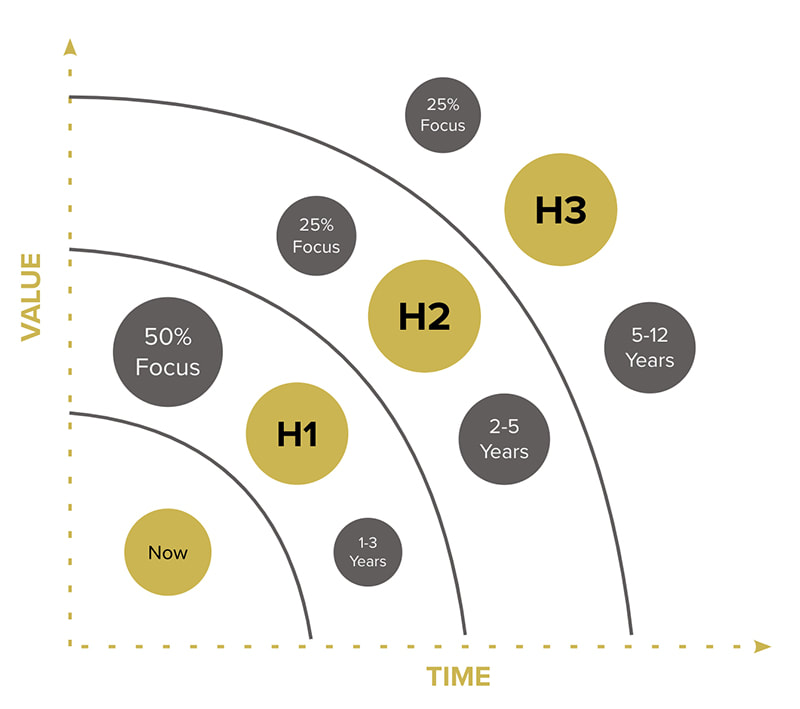|
Illustrious is a leader in the change management and team alignment space. Since its founding in 2020, Illustrious has helped companies orient, pivot, scale, and simplify. Here are the four core values that drive their team of talented, visual consultants.
Energizing Creativity As artists, we believe there is a direct line between innovation or creativity and our ability to be in the present moment and improvise. This invisible line can be tense or slack. When it is tuned up it can be played like a guitar or piano. We are at our best when helping our clients create harmony from dissonance and we love helping them shine. Compassionate Curiosity As facilitators and coaches, we treat active listening as a valued skill in order to discover needs and opportunities. We genuinely like people and want to learn more about them. We cherish stories and love hearing them. People are at their best when they feel heard, valued, trusted, and understood. Belief in Human Potential As humans, we have a relentless belief in the greatness of other humans. We don’t see them in their current state of blame, confusion, uncertainty, fear, or insecurity. We see the white, hot light at their center. We see them on their path to future growth as they commit to being the ideal version of themselves. Humans are at their best when someone sees them deeply and believes in them. Commitment to Quality Outcomes As thought partners in your business, we are focused on professional mastery. That means we are committed to learning, transparent processes, dress and technical rehearsals, and enthusiastic attention to detail. The sooner we get it right, the sooner you can identify the bright line through your organization’s thinking. A business is at its best when its leaders and teams are aligned on the vision, culture, story, and strategy.
0 Comments
DEI (diversity, equity, and inclusion) initiatives are growing quickly in organizations around the world. Leaders and entire departments dedicated to DEI – or EDIB (equity, diversity, inclusion, and belonging) – are being installed in for-profit and nonprofit organizations. These teams are committed to deeply embedding DEI principles into the values and actions of the business so that it can be more accessible, welcoming, and empowering.
Here we’ll discuss the “E” in DEI. Compared to diversity and inclusion, the words equity and equality (with which equity is sometimes substituted) are ambiguous terms that can be defined very differently from organization to organization. According to Robert Harris, Director of EDIB at National Audubon Society, it's "not advisable to use equity and equality interchangeably." "In general," he says, "equality is when folks receive the same resources in amount and proportion and equity is when differences are recognized. Resource allocation varies based on those differences to achieve equality." How you implement your DEI initiatives will depend on how these terms are defined. Your definition of these terms will also influence your culture deck, hiring process, team charter, operating agreements, mission statement, media/investor relations, etc. Making sure that they are clear and meaningful for everyone on the team is very important. Equity may be defined in the following ways:
To review, diversity means that you have various people in the room, equity means that there is awareness that they are not all on equal footing, and inclusion means that you have a process for engaging them. Equality is the outcome of people being equally resourced. If you’d like to have a conversation about team performance, team design, or team development, please schedule a discovery call today. THE 7 TYPES OF INNOVATION
ISO TC 279 defines innovation as "a new or changed entity realizing or redistributing value." At Illustrious, we define innovation as the act of creativity and experimentation that turns your best ideas (and even your best failures) into value. This means that whether we’re talking about corporate innovation or a small business that encourages innovation best practices on small teams, you can’t have innovation without the ability to 1) generate and elevate new ideas, 2) iterate ideas into process maps and prototypes, and 3) validate and scale those idea prototypes into the right audience fit. Innovation strategy falls into numerous categories. These include:
THE 3 HORIZONS OF INNOVATION An organization’s innovation strategy also falls into what McKinsey and Company call horizons. These are the time-bound areas of focus for innovation efforts. The first horizon (H1) is the home for any short-term innovation strategy and includes both “incremental” and “notable” shifts along the value scale. Incremental shifts include improvements or additional unique features to products and services (think a toothbrush with rubber grips or a flipchart with handles). According to Magnus Penker, author of How to Assess and Measure Business Innovation, “notable” shifts include a “distinguishable advance in design, process or business model” (think the RAZR phone or disposable hearing aids). The second horizon (H2) includes mid- to long-term innovation efforts and results in significant or “radical” shifts. This means there is an advance in the product or experience design as well as to the process or business model (think Southwest Airlines or iPod/iTunes). The third horizon (H3) is where we see game-changing transformational shifts. The hallmark of the third horizon is that at least two important advances are made in a combination of design, process or business model. (Think market disruptors like the razor and blades model or the light bulb and electrical grid.) Each of these corporate innovation types requires a different leadership style (entrepreneurial, democratic/participatory, coaching/charismatic, etc.). Each type requires a decision to buy, build, partner or do “open” innovation (collaboration outside the walls of the business). With each leap, what got you there will not get you where you’re going. At each horizon, you will take on new or different team members, mindsets, language, business systems and management methods. When you commit to the practice of innovation, you are not only committing to changing your surroundings, but also to changing yourself. If you’re ready to have a conversation about the inner work required to lead innovation in your business, we’d love to help you shine. |
Details
ABOUT THE AuthorJoran Slane Oppelt is an international speaker, author and consultant with certifications in coaching, storytelling, design thinking and virtual facilitation. Archives
March 2024
Categories
All
|




 RSS Feed
RSS Feed